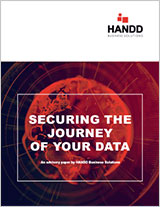DC Blog
Learn how to keep your business, its staff and your devices protected with our free resources
-
Report
Why you need to create a culture of data security awareness
A culture of data security awareness is essential to reducing data loss.
The incoming raft of regulations around data protection is enhancing the profile of data security. These days it isn’t so much ‘if’ you suffer a data loss, it’s more ‘when’ you suffer data loss, so the need to create a culture of data security awareness is more important than ever.
So, what is data security awareness?
Data loss can, at best, be inconvenient. At worst, it can be market-defining.
A culture of data security awareness is created with users at every level of the organisation are aware of the value of data and their responsibility to protectA collaborative responsibility for the security of data both reduces data loss and encourages an overall awareness of protecting data in everyday situations across an organisation.
The role of your data classification policy
An effective data classification policy should provide a framework on which your organisation can nurture a culture of data security awareness and develop healthy data hygiene habits amongst all users.
There are many ways in which your policy can do this including:
- Integrating decision making on the value of data into everyday working practices.
- Reminding users of classifications through the use of headers, footers and watermarks.
- Alerting users to actions that contradict permissible data access or sending.
With data security being a consistent element of a user’s workflow, the need to protect data becomes much more a part of everyday life. This greater awareness encourages users to make smarter data handling choices – not leaving data files visible on screens, printers or photocopiers, for example. Users will start to think twice before forwarding email chains or sensitive data outside of the company and will be more aware of phishing attacks and malware.
To be effective at nurturing a culture of data security, Data Classification policies need to cover more than the basics of the classification labels. They should focus around achieving the five main elements of data security (see ‘5 Questions you need to answer to protect your critical data’ for more info), as well as include guidance on visual markings, metadata and rule handling (see ‘3 essential things most data classification policies miss out’) and how these can be used to deliver the optimum benefits to the business.
To read more on how to devise the perfect data classification policy to unlock the benefits of cost savings, data security and develop a culture of data security awareness, download our white paper How to create the perfect data classification policy.


